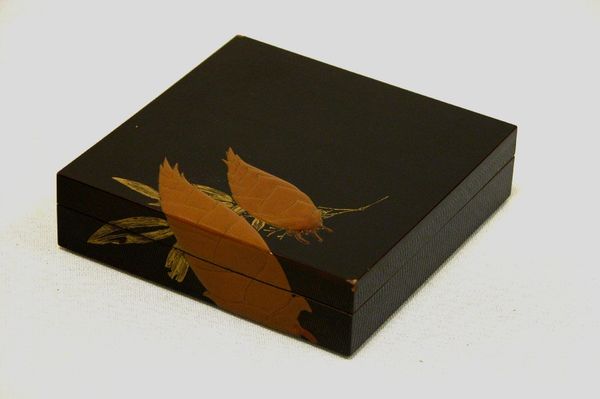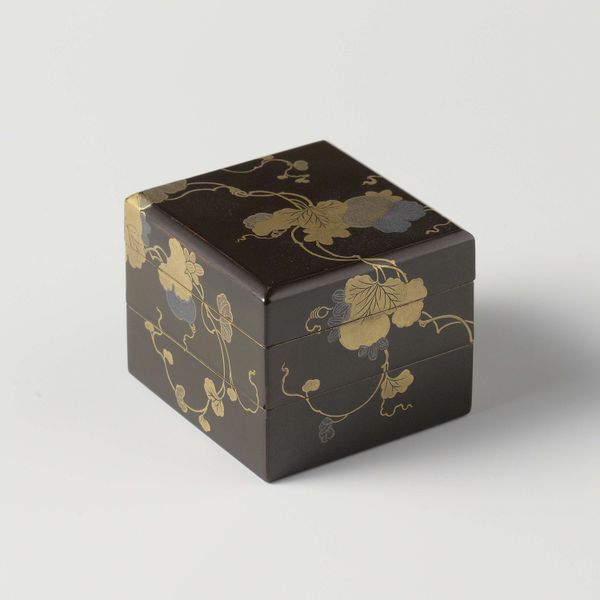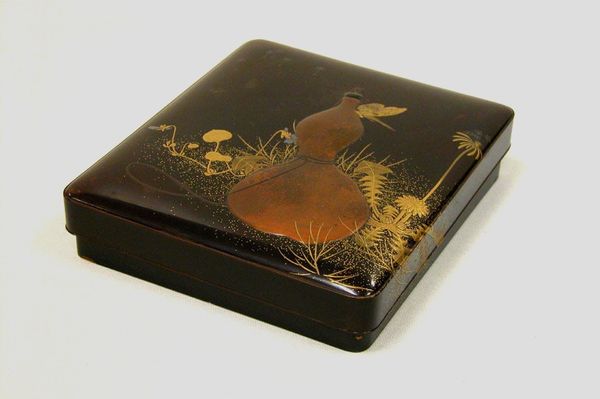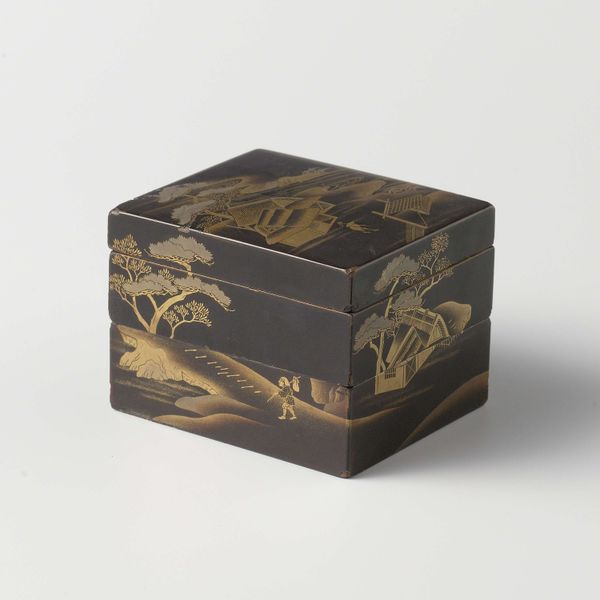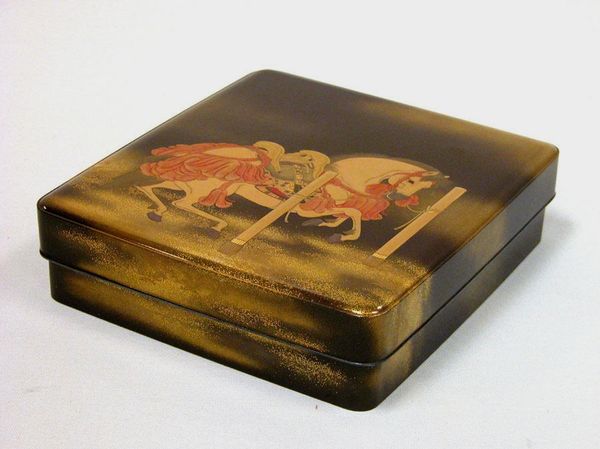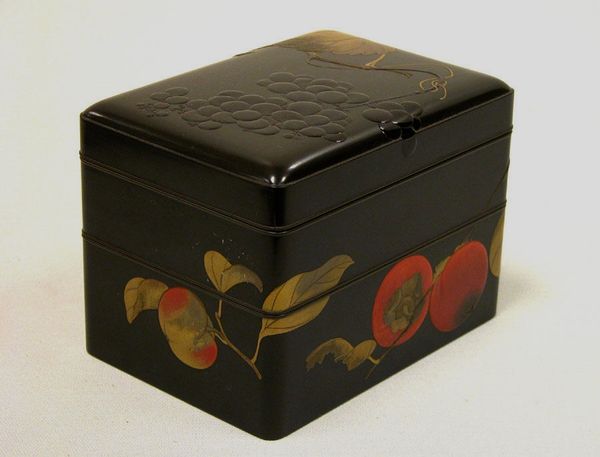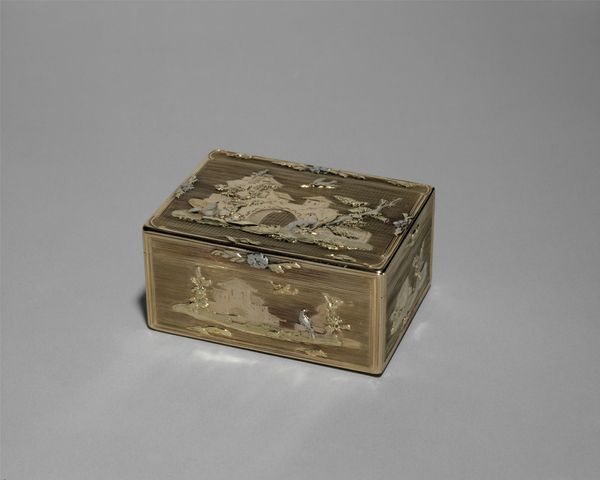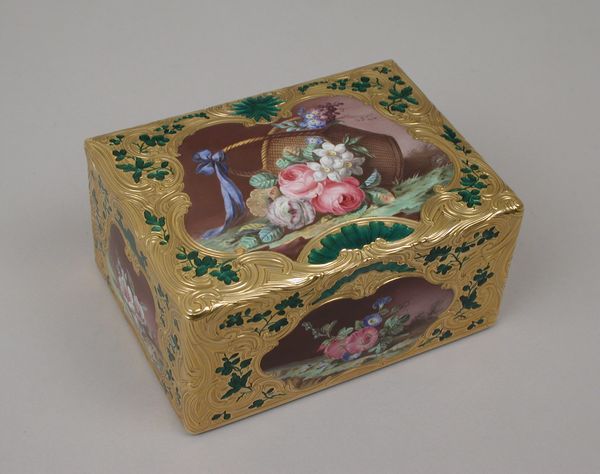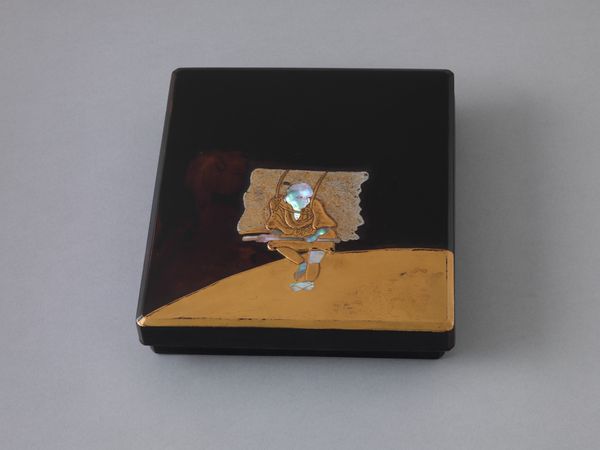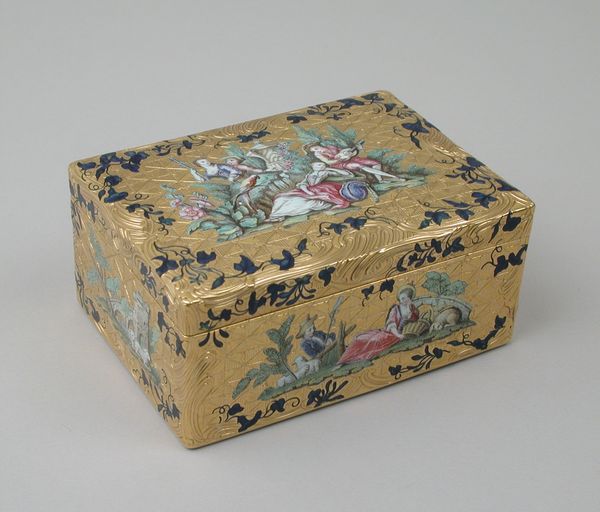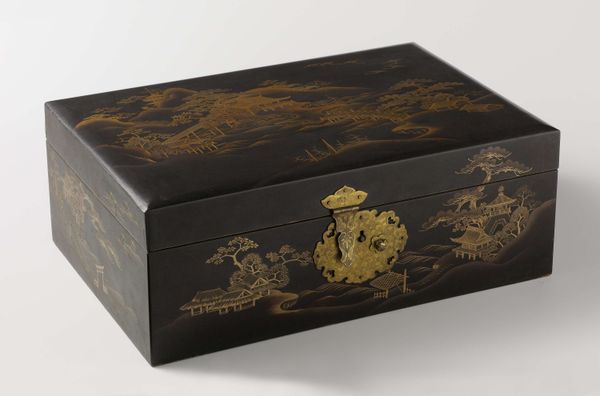
carving, wood
#
carving
#
asian-art
#
japan
#
orientalism
#
carved
#
men
#
24_meiji-period-1868-1912
#
wood
#
product photography
#
decorative-art
#
miniature
#
calligraphy
Dimensions: H. 1 3/8 in. (3.5 cm); W. 3 1/2 in. (8.9 cm); L. 4 3/8 in. (11.1 cm)
Copyright: Public Domain
This small incense box, made by the Koma School, presents a scene from the Noh play Kokaji in meticulously crafted lacquer and inlaid metals. The dark, lustrous ground of the box lid contrasts sharply with the shimmering golds and silvers depicting the characters and setting, immediately drawing the eye. The composition, divided into two distinct registers, shows a scene featuring the smith Kokaji. Notice how the artist uses the planar surface to flatten the pictorial space, enhancing the decorative quality typical of Japanese lacquerware. The careful arrangement of figures and objects—the smith at work, the deity assisting him—within a confined space, speaks to a broader aesthetic interest in theatrical representation. The box's design not only serves a functional purpose but also acts as a canvas for storytelling and cultural expression. The scene invites us to consider how narrative and cultural identity can be captured within the structure of a simple, elegant object. Through the arrangement of space, color, and form, the incense box acts as a profound statement of artistry and cultural memory, inviting ongoing dialogue.
Comments
No comments
Be the first to comment and join the conversation on the ultimate creative platform.

